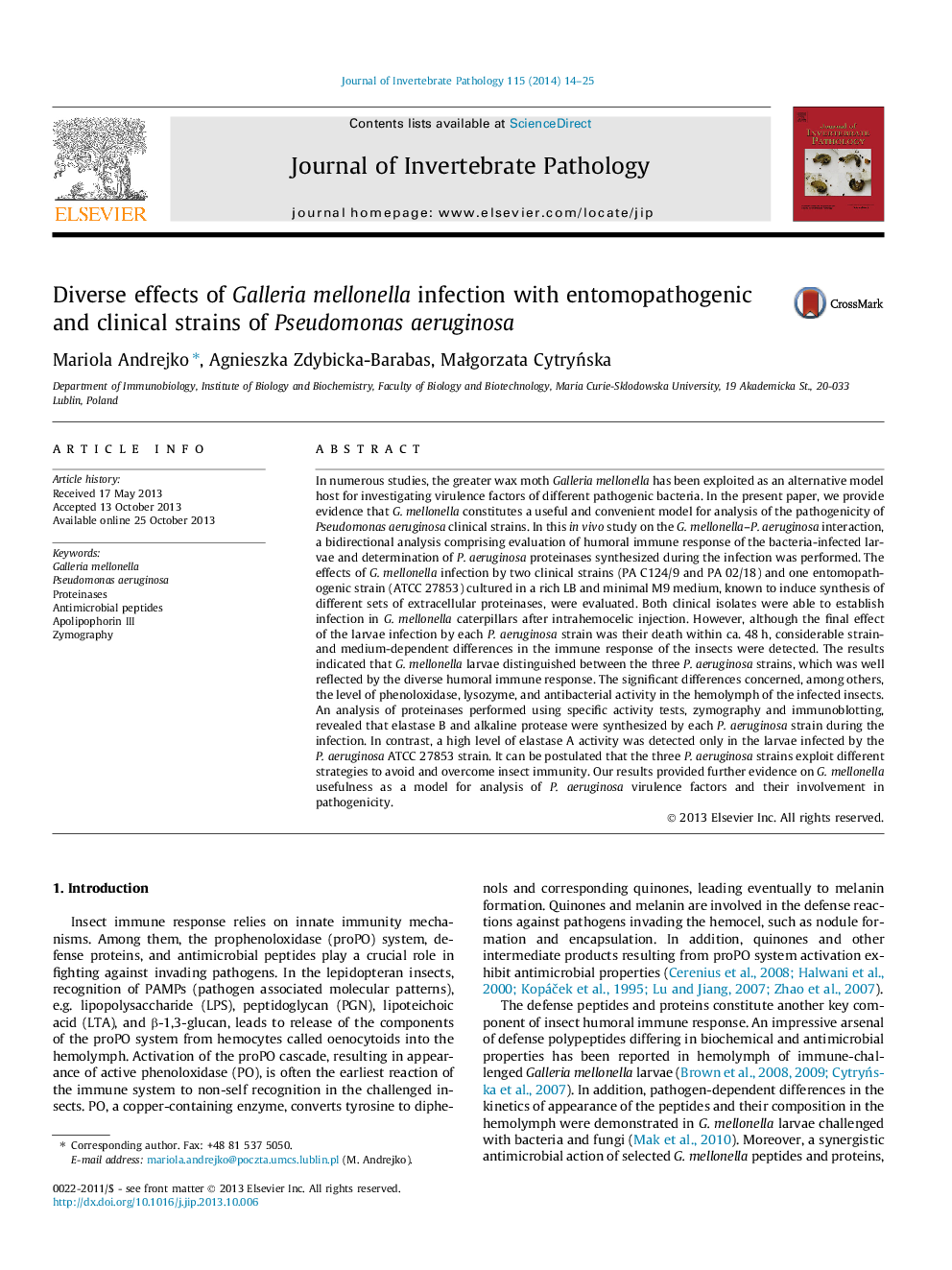| Article ID | Journal | Published Year | Pages | File Type |
|---|---|---|---|---|
| 6389536 | Journal of Invertebrate Pathology | 2014 | 12 Pages |
â¢G. mellonella immune response to P. aeruginosa depended on bacterial strain.â¢Differences in immune response concerned antibacterial, lysozyme, and PO activity.â¢ApoLp-III level in hemolymph of infected larvae depended on P. aeruginosa strain.â¢During infection all P. aeruginosa strains produced LasB and alkaline protease.â¢High LasA activity was detected only in P. aeruginosa ATCC 27853-infected insects.
In numerous studies, the greater wax moth Galleria mellonella has been exploited as an alternative model host for investigating virulence factors of different pathogenic bacteria. In the present paper, we provide evidence that G. mellonella constitutes a useful and convenient model for analysis of the pathogenicity of Pseudomonas aeruginosa clinical strains. In this in vivo study on the G. mellonella-P. aeruginosa interaction, a bidirectional analysis comprising evaluation of humoral immune response of the bacteria-infected larvae and determination of P. aeruginosa proteinases synthesized during the infection was performed. The effects of G. mellonella infection by two clinical strains (PA C124/9 and PA 02/18) and one entomopathogenic strain (ATCC 27853) cultured in a rich LB and minimal M9 medium, known to induce synthesis of different sets of extracellular proteinases, were evaluated. Both clinical isolates were able to establish infection in G. mellonella caterpillars after intrahemocelic injection. However, although the final effect of the larvae infection by each P. aeruginosa strain was their death within ca. 48Â h, considerable strain- and medium-dependent differences in the immune response of the insects were detected. The results indicated that G. mellonella larvae distinguished between the three P. aeruginosa strains, which was well reflected by the diverse humoral immune response. The significant differences concerned, among others, the level of phenoloxidase, lysozyme, and antibacterial activity in the hemolymph of the infected insects. An analysis of proteinases performed using specific activity tests, zymography and immunoblotting, revealed that elastase B and alkaline protease were synthesized by each P. aeruginosa strain during the infection. In contrast, a high level of elastase A activity was detected only in the larvae infected by the P. aeruginosa ATCC 27853 strain. It can be postulated that the three P. aeruginosa strains exploit different strategies to avoid and overcome insect immunity. Our results provided further evidence on G. mellonella usefulness as a model for analysis of P. aeruginosa virulence factors and their involvement in pathogenicity.
Graphical abstractDownload full-size image
